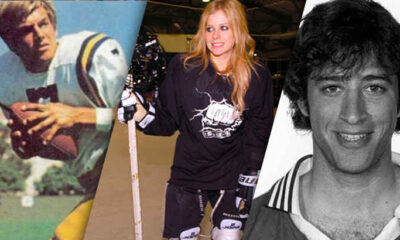The Wild West was a time of range wars, railroad wars, lawless desperadoes, vigilante law men, and Cowboys and Indians strife. Given little attention during these years, however, are the things that just regular working class people were up to.

ADVERTISEMENT - CONTINUE BELOW
Farmers, fishers, homesteaders, housewives, and laborers. Click NEXT to get a rare look at civilian life in the wild west.
Kit Carson

ADVERTISEMENT - CONTINUE BELOW
Kit (Christopher) Carson was an American frontiersman who helped develop California. He was illiterate (and embarrassed by the fact) and spent a lot of time with Natives (even marrying Native women twice). His third wife was Mexican. Kit had a total of 10 children.
“The Cow Boy”

ADVERTISEMENT - CONTINUE BELOW
This photo, called “The Cow Boy,” was taken by former miner John C. H. Grabill, and is still considered to be one of the most realistic depictions of cowboys. Notice the leather chaps and the cloth neck wrap he’s wearing to keep cool.
Rose of Cimarron

ADVERTISEMENT - CONTINUE BELOW
Rose Dunn, also known as Rose of Cimarron, fell in love with a wild west bandit named George “Bittercreek” Newcomb after being introduced to him by her brothers. In 1895, George was killed by the brothers after they became bounty hunters. Rose later married a politician.
Wyatt Earp and Bat Masterson

ADVERTISEMENT - CONTINUE BELOW
Wyatt Earp (sitting) is seen photographed with his friend Bat Masterson. Wyatt is known for his role in the gunfight at the O.K. Corral where he, along with his brothers Morgan and Virgil, as well as his friend, Doc Holliday, squared off against four outlaws.
Jesse James

ADVERTISEMENT - CONTINUE BELOW
Jesse James was first a Confederate bushwhacker who later was the most famous member of his gang of outlaws. He was killed by another member, Robert Ford, who wanted the bounty on James’ head.
Faro

ADVERTISEMENT - CONTINUE BELOW
Every western movie has gotten it wrong. Cowboys did not play poker in the 1800s but a game called Faro. Faro was invented outside the United States and after being imported, gained popularity.
Tibercio Vasquez
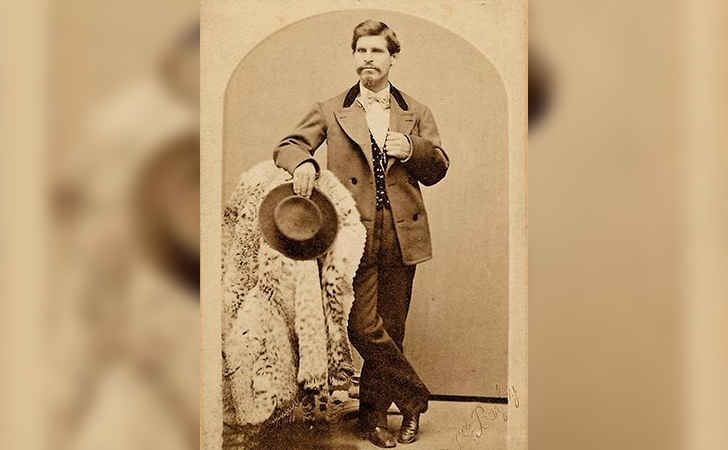
ADVERTISEMENT - CONTINUE BELOW
Tibercio Vasquez went on a 20-year criminal career and managed to escape the authorities that whole time. The hispanic outlaw was eventually captured and hanged in 1875.
The Pacific Railroad

ADVERTISEMENT - CONTINUE BELOW
In the middle of the Civil War, the U.S. began to build a railroad from Iowa to San Francisco, CA. The objective was to create a transcontinental railroad to facilitate transportation. It took six years to complete and was a resounding success.
Surveying The Colorado River

ADVERTISEMENT - CONTINUE BELOW
In 1871, wild west photographer, Timothy O’Sullivan, photographed Lieutenant George Wheeler and his crew as they were conducting a survey of the Colorado River in Black Canyon. Timothy (the photographer) is the fourth man from the left.
Kraemer’s Saloon

ADVERTISEMENT - CONTINUE BELOW
This old west saloon in Michigan looks just like one of today’s many bars. That’s because the general layout of saloons and bars has not changed much in the 150 years since. There’s a counter with a bartender who sells alcohol. A perfect combination.
The Navajo In Navajo Nation

ADVERTISEMENT - CONTINUE BELOW
The Navajo have inhabited a very inhospitable environment for a long time. Today’s Navajo Nation is the largest reservation in the United States. Here, you can see a family of Navajo riding across the Canyon de Chelly near the turn of the 20th century.
General George Crook

ADVERTISEMENT - CONTINUE BELOW
This photo of General George Crook, the Army’s preeminent Indian fighter during the Indian Wars, was taken in Arizona in 1886. He is shown here with two Apache scouts, Dutchy and Alchesay, along with his favorite mule, Apache.
Geronimo

ADVERTISEMENT - CONTINUE BELOW
Geronimo was the leader of the Apaches and united a number of Native tribes against their American and Mexican enemies.
The Black Hills

ADVERTISEMENT - CONTINUE BELOW
Before his defeat at the Battle of Little Big Horn, while he was still a Lieutenant Colonel, George Custer rode with his crew to the Black Hills of South Dakota in search of a location for a fort.
Charlie Siringo
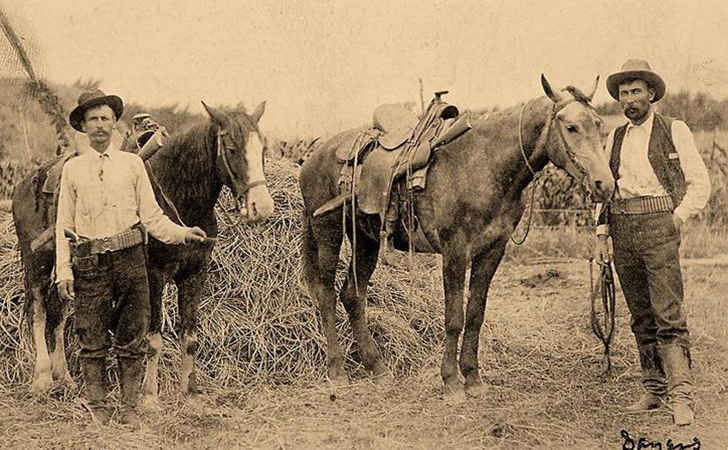
ADVERTISEMENT - CONTINUE BELOW
The author of the tell-all book, “A Cowboy Detective,” Charlie Siringo, was a former Pinkerton Detective Agency member who left the business and revealed the agency’s secrets. The agency went out of its way to try and stop him from revealing what he knew.
Native American Weavers

ADVERTISEMENT - CONTINUE BELOW
Once Native Americans saw how popular their weaving was with the white colonists, they began to make blankets and rugs to trade for other goods. Before this, the weaving was used to make clothing for the tribe.
Pool Hall

ADVERTISEMENT - CONTINUE BELOW
Men weren’t the only ones who flocked to the pool halls in their free time. Women occasionally made appearances too, and were known to swindle men for their money, and their egos.
Paiute Tribe
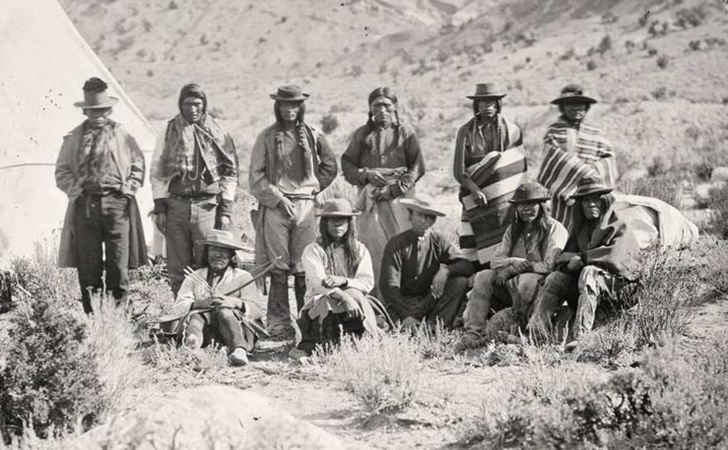
ADVERTISEMENT - CONTINUE BELOW
This picture of some members of the Paiute tribe shows some of the effects that colonization of the Americas had on the local population. Western hats and some western garb is mixed with traditional Native clothing.
Women Workers

ADVERTISEMENT - CONTINUE BELOW
In the toughest of times, the women of the west had to participate in the work force since families had to make ends meet any way they could. But the work was demanding, often outdoors and with physical labor and lots of hours doing agricultural and other large-scale jobs. By the end of the day, they were exhausted.
Young Woman’s Portrait

ADVERTISEMENT - CONTINUE BELOW
Back in these times, black and white portraits had really begun to paint a more vivid and lifelike picture of the everyday folks who were lucky enough to get their photo taken at the time. Here, young woman poses gracefully for the photographer.
Timothy H. O’Sullivan’s Darkroom Wagon

ADVERTISEMENT - CONTINUE BELOW
During the Old West, cameras were a very new invention, and were extremely rare. Timothy H. O’Sullivan was one of the era’s most important and prolific photographers, and he traveled around with his own mobile darkroom in a wagon, shown here being carried by four mules through the Carson Sink in Nevada.
The Valley of Death

ADVERTISEMENT - CONTINUE BELOW
Death Valley in California is one of the most inhospitable places on Earth. It’s 282 feet below sea level and has recorded the highest air temperature on Earth… 134 degrees Fahrenheit. 19th century businessmen went to Death Valley in search of borax.
Deadwood

ADVERTISEMENT - CONTINUE BELOW
Deadwood, Dakota Territory, had this celebration, captured by wild west photographer, John Grabill, when the town completed the Deadwood Central Railroad and the streetcar railroad.
Canyon de Chelly

ADVERTISEMENT - CONTINUE BELOW
The Canyon de Chelly National Monument, found within current day Navajo Nation, is one of the most visited national monuments in the United States.
A True Cowboy

ADVERTISEMENT - CONTINUE BELOW
This picture depicts a true cowboy, Charlie Nebo, along with Nicholas Janis. Charlie never tried to inflate his achievements and was happy to live like a true frontier man.
Civilized Unidentified Cherokee

ADVERTISEMENT - CONTINUE BELOW
This tintype photo is circa 1870, and depicts an unidentified Cherokee (which is one of the so-called Five Civilized Tribes that were relocated to Indian Territory) wearing the “civilized” clothing of the white man, which his people had adopted by that time. He seems to be very prominently brandishing a gold-tinted knife.
Early Texas Rangers

ADVERTISEMENT - CONTINUE BELOW
In the years immediately following the Civil War, the Texas Rangers’ principle adversaries were not actually outlaws, but Comanches. Photos of real Texas Rangers taken prior to 1870 are very rare. This one is of James Thomas Bird (left) and John J. Haynes (right), and was taken in 1868. You can see that they are wearing outfits more suited to Civil War guerrillas than the later Texas cowboys.
Ambrotype Photography

ADVERTISEMENT - CONTINUE BELOW
One of the earliest forms of photography was called ambrotype. It was used for about 10 years before tintype became more popular. Ambrotype was done on glass. Here is an example of an ambrotype photograph.
Buffalo Bill’s Wild West Show

ADVERTISEMENT - CONTINUE BELOW
Buffalo Bill, whose real name was William Cody, started a very popular “Wild West” show in 1883 that lasted for several decades. The show toured around the U.S. and had many acts, including gun fight re-enactments.
Sierra Nevada Mountain Trail

ADVERTISEMENT - CONTINUE BELOW
Traveling across the wild west was very dangerous. Many rich travelers had to hire armed men to protect them on dangerous routes.
Buffalo Bill’s Cowboys

ADVERTISEMENT - CONTINUE BELOW
Buffalo Bill’s biggest attraction was his cowboys and their gun fight re-enactments. Only the best cowboy sharpshooters made it into the show and only after an audition to prove their skill. Once in, they no longer had any financial worries as the show paid them well.
Pearl Hart

ADVERTISEMENT - CONTINUE BELOW
Pearl Hart gained notoriety just before the turn of the 20th century as a female stagecoach robber. She cut her hair short, dressed in men’s clothing, and was eventually sentenced to five years in prison, but pardoned after three years. She had two kids.
Wild West Bandits

ADVERTISEMENT - CONTINUE BELOW
There were countless gangs in the wild west and all of them carried guns. While the name of this gang is no longer known, some researchers believe the man in the middle is John Kinney of the John Kinney Gang. No one knows for sure, though.
Texas Rangers

ADVERTISEMENT - CONTINUE BELOW
Chuck Norris did not found the Texas Rangers — they’ve actually existed since 1836. Near the beginning, each Texas Ranger was expected to provide his own ammunition and equipment. They were paid in property.
Mining Money

ADVERTISEMENT - CONTINUE BELOW
In the late 1800s, you could make a lot of money mining gold, silver or copper. Owning the mine netted you the biggest profits, but the miners themselves also made out big, regardless of how bad conditions were.
Bloody Bill

ADVERTISEMENT - CONTINUE BELOW
Born in 1840, Bloody Bill became the leader of the gang, Quantrill’s Raiders, during the Civil War (on the Confederate side). He had a lot of pent up rage and slaughtered Union soldiers whenever he could. On one occasion, he killed 20 soldiers with his gang and then massacred another 100.
Buffalo Bill’s Grass Dancers

ADVERTISEMENT - CONTINUE BELOW
Two Oglala Lakota Natives, known as Elk and Black Elk, were part of Buffalo Bill’s Wild West show. They traveled all around the world with the show and were famous for dancing while wearing shells and bells.
Going For Gold

ADVERTISEMENT - CONTINUE BELOW
Gold mining was very profitable (and still is to this day) so it’s no surprise that there were many innovations in the industry. Timothy O’Sullivan took this picture of a railway track in Illinois that led to a gold mine. Gold carts were moved up and down the railway using a pulley.
Spotted Elk

ADVERTISEMENT - CONTINUE BELOW
Spotted Elk, also known as Big Foot, was a Lakota Sioux chief who was killed in the Wounded Knee Massacre of 1890. He was just one of the 153 Native American casualties killed by the Union soldiers, including women and children.
A Bad Deal

ADVERTISEMENT - CONTINUE BELOW
One aspect of American history that is not talked about enough is how bad of a deal Native Americans got during European colonization. First they were forced to move west, then they were forced to live on reservations while the white settlers took all the best land.
Bathing In The Wild West

ADVERTISEMENT - CONTINUE BELOW
Bathing did not occur on a daily basis in the wild west. In fact, some believed that bathing could make you sick! Needless to say, this led to a stinky situation. Women bathed at home, and by “bathed” we mean they wiped themselves down with a cloth and a pitcher of water.
Wanted Dead or Alive: Bill Doolin

ADVERTISEMENT - CONTINUE BELOW
Wanted posters were always popular, but since the “Dead or Alive” qualifier came about, lawmen and bounty hunters often liked to prove that they had bagged their prey by taking a photograph of their dead victim. This is one such photo of famous outlaw Bill Doolin, who was killed by U.S. Marshal Heck Thomas with around 20 buckshot wounds.
Buffalo Soldier

ADVERTISEMENT - CONTINUE BELOW
Native Americans had a special name for any Black American who served in the U.S. Army: Buffalo Soldier. You might remember the term from Bob Marley’s song. In 2005, the final living Buffalo Soldier passed away. He was 111 years old.
The Dalton Gang
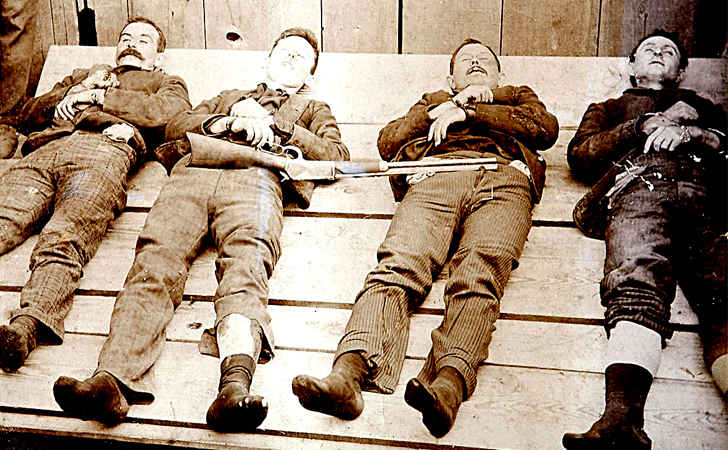
ADVERTISEMENT - CONTINUE BELOW
The Dalton brothers were lawmen who became so frustrated at not getting paid, they decided to become outlaws and rob trains and banks in 1890. They were pretty successful outlaws until a bank robbery went wrong in Coffeyville, Kansas in 1892. Grat and Bob Dalton were shot and killed, while brother Emmett survived, despite taking a whopping 23 bullets. Emmett was captured, tried, and convicted, and spent 14 years in prison before he was paroled.
Belle Starr

ADVERTISEMENT - CONTINUE BELOW
One of the most famous female outlaws in the wild west was Belle Starr. Her real name was Myra Maybelle Shirley Reed Starr and her family called her May. She rode sidesaddle with two pistols and was killed in 1889. Her murder is unsolved to this day.
Chinese Labor

ADVERTISEMENT - CONTINUE BELOW
Before Mexicans, these Chinese railway workers were the hated-immigrants-du-jour. They made $1 a day when white workers made about $2.50. They also had to personally move their own camps and get their own food, while this was all provided for the white workers.
Settling Utah

ADVERTISEMENT - CONTINUE BELOW
Timothy O’Sullivan was a photographer who took many pictures of the European settlement of the wild west. This picture he took of Little Cottonwood, UT, is one such photograph in his chronicle of a changing western landscape.
Cowboys Capture a Wolf

ADVERTISEMENT - CONTINUE BELOW
This photo from 1887 shows the proud cowboys after capturing a gray wolf. Predators such as these, as well as mountain lions and bears, would regularly attack cattle, so it was quite an accomplishment for cowboys like these to take out anything that threatened the lives of their precious cattle.
Another Cowboy Posing

ADVERTISEMENT - CONTINUE BELOW
Like we’ve said, cowboys loved to have their pictures taken and usually wore their best duds. These pictures were meant to show off, so they usually included accessories like guns and hats.
Quanah Parker

ADVERTISEMENT - CONTINUE BELOW
This photo from the late 1800s shows the great Comanche chief and war leader, Quanah Parker. He was known for his bravery and his aggression as a warrior, and for becoming a leader at a young age. He is shown here wearing an eagle feather headdress and holding a lance bottom-up.
General Custer

ADVERTISEMENT - CONTINUE BELOW
The general most famous for losing at the Battle of Little Big Horn, George Armstrong Custer, took this picture shortly before his death. He had risen in the Army ranks during the Civil War and the Indian Wars.
Ned Christie

ADVERTISEMENT - CONTINUE BELOW
Ned Christie was a Cherokee statesman who was notable for fighting American lawmen in a series of conflicts that came to be known as “Ned Christie’s War.” He was accused of killing a U.S. Marshal in 1887, which later turned out to be wrongfully so in 1918, according to testimony. Nevertheless, his home was burned down by law enforcement officials in 1889, and he was killed in 1892 by lawmen.
Terry’s Texas Rangers
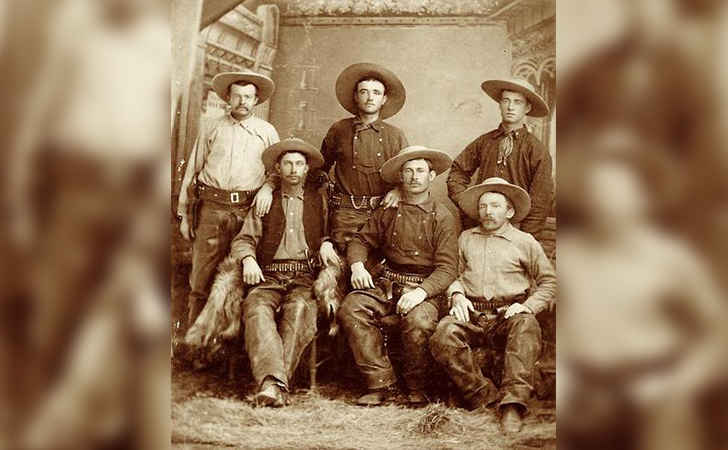
ADVERTISEMENT - CONTINUE BELOW
One of the most successful cavalry regiments on the Confederate side of the Civil War was Terry’s Texas Rangers. The regiment was formed in 1861 and was involved in at least 275 engagements until it was finally dissolved in 1865.
Wild Bill Hickok

ADVERTISEMENT - CONTINUE BELOW
Wild Bill Hickock might have been the fastest gun in the west and legend has it that he killed over 100 people. Bill was not happy when this count gave him the reputation of being a killer, even though he was responsible for exaggerating his kill count. In reality, he killed about 10 men.
John Grabill, Wild West Photographer
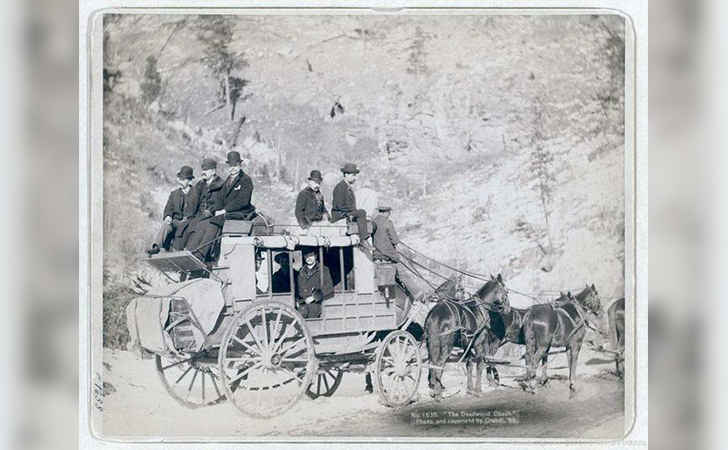
ADVERTISEMENT - CONTINUE BELOW
In the late 1800s, photographer John Grabill sent almost 200 pictures to Congress for copyright. His photos chronicled the development of South Dakota, Wyoming, and Colorado, as well as its effects on the local Natives.
Curly: Custer’s Crow Scout

ADVERTISEMENT - CONTINUE BELOW
Curly was a young and handsome 17-year-old during the Battle of Little Bighorn, where he witnessed firsthand the fall of Custer. He was a scout for Custer, which meant that he didn’t actually engage in the fighting, but he was always in close proximity to it. Word quickly spread that Curly was the “only survivor” of the battle, and he became famous, with his photograph garnering high demand. This photograph is one of the earliest of Curly, taken shortly after the battle in 1876 by D.F. Barry in Bismarck, Dakota Territory.
Olive Oatman

ADVERTISEMENT - CONTINUE BELOW
When she was 14 years old, Olive Oatman’s parents were killed by a tribe of Native Indians. She and her younger sister were enslaved and a year later traded to a Mohave tribe. Both sisters were tattooed on the chin and her younger sister died of starvation. She was held for five years.
Wild Western Man

ADVERTISEMENT - CONTINUE BELOW
This 19th century man, shown in a Kansas City newspaper, is wearing the traditional garb of the wild west. The hat he’s wearing is a Mexican sombrero and was vital to survival in the harsh wild western climate.
Chief of the Comanche

ADVERTISEMENT - CONTINUE BELOW
Quanah Parker was half Native American and half white (his mother was of European descent). He became a great Comanche chief who opposed the government’s orders that the Natives move to a reservation. Eventually he agreed after the threats became too great.
19th Century Move

ADVERTISEMENT - CONTINUE BELOW
It seems like everyone these days moves into a new house or apartment every few years. Well, back in the 19th century, people also moved around, just not as frequently. Here is a couple taking a break in Kansas as they head west to start a new life.
Me And My Guns

ADVERTISEMENT - CONTINUE BELOW
Guns were an integral part of survival in the wild west and everyone had one. Since photographs were a relatively new invention and very exclusive, many cowboys were filled with pride when they got their photograph taken — almost always with their guns showing.
Rufus Buck Gang

ADVERTISEMENT - CONTINUE BELOW
Rufus Buck started a short-lived, but deadly, gang made up of part-Creek Indians and African-Americans. They killed some people, robbed, raped and were eventually captured. They were sentenced to death.
Tombstone

ADVERTISEMENT - CONTINUE BELOW
Tom McLaury, Frank McLaury, and Billy Clanton were all massacred during the 1881 shootout at the O.K. Corral. “Murdered on the Streets of Tombstone” read the sign that preceded their dead bodies during the funeral procession. Eventually the bodies became a front window display in the hardware shop.
Slaughter’s Cowpokes

ADVERTISEMENT - CONTINUE BELOW
Captured in 1885, this group of cowpokes worked for cattle businessman John Slaughter. This photo is widely considered to be the best and clearest photo ever taken of hard-working cattle ranchers.
Goat Chaps Cowboy
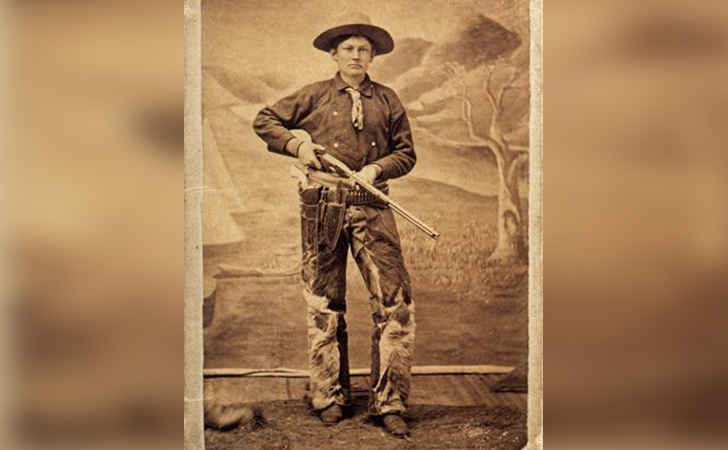
ADVERTISEMENT - CONTINUE BELOW
Chaps could be made from many various types of material based on what kind of work cowboys did. The majority were made from durable cowhide, but some were sewn together pieces of goat and sheep skin.
“Bloody Bill” Anderson

ADVERTISEMENT - CONTINUE BELOW
William T. Anderson’s story of vengeance turned him into a full-blown savage after his sister died while under custody of Union soldiers during the Civil War. He satisfied his revenge by hijacking a train full of Union troops and slaughtering 24 of them, thus giving him the name “Bloody Bill” Anderson.
Shoshone Falls

ADVERTISEMENT - CONTINUE BELOW
When photographer Timothy O’Sullivan was passing through the picturesque Shoshone Falls in Idaho in 1874, he couldn’t pass up the opportunity to set up his equipment and snap a photo of the gorgeous scenery.
Billy the Kid

ADVERTISEMENT - CONTINUE BELOW
Captured in 1879, this photo remains the only authentic photo of infamous outlaw Billy the Kid (William H. Bonney).
Two Grand Homes

ADVERTISEMENT - CONTINUE BELOW
A small group of teepees sit in the foreground of this photo taken in Pine Ridge, South Dakota, while two large estates dwarf them — a foreshadowing of what would eventually become of the Native American territory.
Nicholas and Virginia Earp

ADVERTISEMENT - CONTINUE BELOW
Wyatt Earp is widely considered to be among the most famous gunslingers in the entire Wild West. Pictured are Nicholas and Virginia, his parents.
Annie Oakley

ADVERTISEMENT - CONTINUE BELOW
Buffalo Bill was crazy lucky when he found arguably one of the greatest sharpshooters of her time. This photo was taken before the show went out tour to London where Oakley famously outshot Lillian Smith.
The Real Gunslinger

ADVERTISEMENT - CONTINUE BELOW
If you’ve seen films like The Magnificent Seven or Tombstone, you likely have a pretty romantic image in your head of what a real gun-totin’ gunslinger looked like. Did it look anything like this? This is what the average gunslinger really looked like.
The Buffalo Hunter

ADVERTISEMENT - CONTINUE BELOW
By the 1880s, buffalo faced near extinction thanks in large part to hunters like this one who over hunted them and dwindled the population. The buffalo hunting business spiked in the early 1870s and then subsided once there were no more buffalo to hunt.
Chief Joseph

ADVERTISEMENT - CONTINUE BELOW
Among the most influential and known Native-American chiefs of his time, Chief Joseph famously led his people — the Nez Perce — on a 1,200-mile trek to Canada. Despite the journey proving unsuccessful, he was still nonetheless immortalized for his efforts.
Joe LeFors, the Lawman

ADVERTISEMENT - CONTINUE BELOW
If you’ve seen Butch Cassidy and the Sundance Kid, you might remember the lawman Joe LeFors. His signature trademark was the white hat. The look, combined with his achievements as a lawman, made him one of the more famous officers of the law.
Ned Christie the Outlaw

ADVERTISEMENT - CONTINUE BELOW
The Wild West was chocked full of justice-thieving outlaws, including the Cherokee Ned Christie who stole horses (the original grand theft auto) and robbed banks. This photo was taken as a sort of trophy photo when he was finally captured.
Billy Simms the Gambler

ADVERTISEMENT - CONTINUE BELOW
Outlaws and hooligans weren’t the only ones that town sheriffs had to look out for. Gamblers — such as this here Billy Simms — were known to get pretty disruptive (particularly after a douse or two of whiskey). Simms was an elite member of frontier high society.
Yellowstone Kelly

ADVERTISEMENT - CONTINUE BELOW
Luther Kelly was a famous Indian scout, a common type of person to be immortalized in stories and legends at the time. Most scouts were given pretty unique and elaborate nicknames, hence the name Yellowstone Kelly.
Cowgirls

ADVERTISEMENT - CONTINUE BELOW
Annie Oakley may have been the most prominent cowgirl at the time, but she was hardly the only one. Pictured are a group of them as they stop at a watering hole to give their horses some much-needed refreshment. These gals were quick with a gun, too!
“Big Nose Kate”

ADVERTISEMENT - CONTINUE BELOW
Big Nose Kate was a Hungarian immigrant and was married to big-time gunslinger Doc Holliday. She had many various jobs — including proprietor of a boarding house and a dance hall girl — but her most well-known (and most utilized) job was as a prostitute.
Lillian Smith

ADVERTISEMENT - CONTINUE BELOW
Considered to be Annie Oakley’s rival, Smith joined Buffalo Bill’s show at just 15 and proved to be one of his best sharpshooters. Unfortunately for her, she lost to Oakley at a show in London, and history has tended to forget about her ever since.
The Lovely Josephine

ADVERTISEMENT - CONTINUE BELOW
Sarah Marcus was an established actress who was on constant tour. When she arrived in Arizona, she married sheriff John Behan. Their marriage didn’t last long, though. Eventually Wyatt Earp rolled into town and Josephine decided that she was in love with him instead. Legend even dictates that the famous O.K. Corral gunfight all started as a feud between Earp and Behan.



































































































